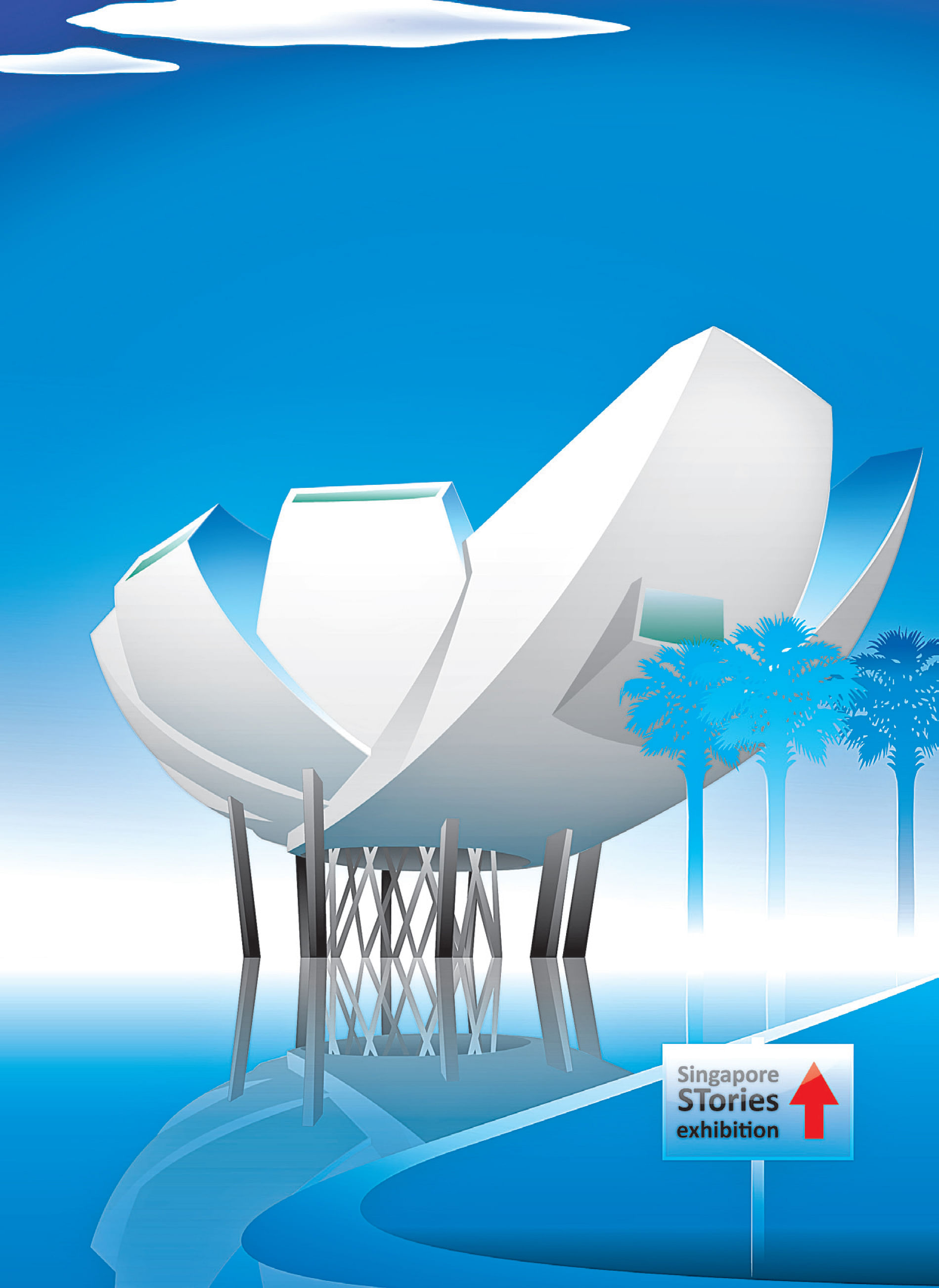One of the items on the crowded calendar of events to celebrate Singapore's Golden Jubilee is a history exhibition at the ArtScience Museum at Marina Bay Sands.
Organised jointly by the museum and The Straits Times, it depicts the history of Singapore since the newspaper's founding in 1845, using the headlines, pictures, advertisements and stories that have been published in its pages.
There is also a futuristic element to the exhibition. The newspaper collaborated with property giant Capitaland to ask Singaporeans to envision the city 50 years in the future.
It is a unique perspective of this place that we live in, therefore, that spans more than two centuries. You start by seeing advertisements in the paper selling things like "two Guzerat milch goats with three kids, all in excellent condition" and end the tour with visions of flying buses.
So far, more than 50,000 people have visited and there were reports of long, snaking queues to get into the museum during the National Day long weekend.

Even though I work at the newspaper and even had a hand in organising the exhibition, I had a chance to look through the exhibits in detail only last week.
There are, of course, the big news stories, such as the iconic front page article published the day after Singapore became independent - proclaiming "Singapore Is Out". But there are also itsy bitsy little photos, ads and snippets of forum letters that tell the Singapore story in another way.
I think the curatorial team did a good job picking only a small selection of interesting and important items from the vast archive, which holds more than 40,000 issues of The Straits Times. But still there is a lot to take in.
Yet I think this is a strength of the exhibition. The Straits Times, being the newspaper of record in Singapore for so long, has documented nearly every facet of life here, from hard politics to soft culture, from business and consumerism to changing sporting pursuits.
So the canvas is wide and varied enough for each individual to take away something different. A picture may evoke a personal memory, or a factoid may connect with a story a grandparent once told the family.
Being a child of the 1980s, I was thrilled by pictures of the "ah beng" fashion of the Centrepoint kids of my era (think billowing shirts and pleated black pants with pockets you can "hide a chicken in", as the saying went at the time) and advertisements for Motorola pagers.
The 1985 picture of the "classy" new food court in Scotts Shopping Centre made me recall the countless bowls of beef noodles I ate there after school, using what was then strange new disposable bowls and cutlery.
And the picture of a young Sim Wong Hoo posing with a computer motherboard brought back memories of nervously opening up my home computer, trying to upgrade it myself with the new Creative Soundblaster sound card.
Other visitors may be interested in the broader themes - what the stories and pictures collectively say about the nation, the governments it has had and its people.
Here, the first thing that struck me was how much Singapore has changed. There are many pictures of what this place used to look like, and it was still shocking for me to note that a photo of a family posing in front of their ramshackle hut made from scrap metal and bits of cardboard and cloth in Sennett Estate was taken as recently as 1957.
The slums in Lavender Street even inspired someone to write a poem, which was published in The Straits Times in April 1924. "Never a scent of Lavender sweet, finds its way down Lavender Street" were the opening lines, before the writer tells you what the place really smelt like.
"Fierce and strong is the smell that comes
From the nanas dump by Kampong slums
The whirling screech of the sawmill floats
Cutting the air with its strident notes"
I also learnt from an 1895 report that Tan Tock Seng Hospital used to be called The Chinese Pauper Hospital, giving a sense of the relationship between race and social status at the time.
Yet even as things changed over the decades, there were just as many things about Singapore that have not changed.
For example, letters to The Straits Times editor complained about overcrowding on the buses and trams as early as the 1930s.
In 1941, a letter appeared that could have been written in 2011, saying: "As seeing is believing, might I be allowed respectfully to suggest that the manager of the Traction Company, the Competent Authority of Oils and the Registrar of Vehicles pay a joint visit to North Bridge Road, South Bridge Road, New Bridge Road and Victoria Street and see for themselves that the petrol and trolley buses are not only crowded to such an extent that there is no standing room, but that there is a crowd of from about half a dozen to a dozen people waiting at various sections along the above-mentioned routes during the rush hours?"
In the education section of the exhibition, there is a 1970 photo of parents using bags and chairs to reserve spots in the queue to register their child for Primary One in the Convent of the Holy Infant Jesus in Kellock Road. Right under it is a current day photo of the bags and chairs in a queue for enrolment into a pre-school kindergarten today.
Elsewhere in the museum, I found a Page One story in 1977 about Singapore waking up to find itself covered in haze. Meteorological Department officials then obviously had the same script as they do now, with one being quoted as saying that the haze "was caused by forest fires which occurred in Sumatra, but Singapore was not affected until yesterday as the winds were originally from east to south-east".
But the exhibits that left the deepest impression on me, ultimately, were the ones that seem innocuous as first, but creep up on you days later with their hidden insights.
Like the 1952 photo of two men, each sitting in a large plastic bucket paddling away furiously in what seems to be floodwaters.
Yet the caption shows that this was a "tub race" that was part of an annual race at Collyer Quay that existed for more than a century - from 1839 to 1963. What happened to simple spontaneous fun in Singapore?
Or the 1981 photo of a local hair salon that had sculpted its model's hair into the shape of the runway of the then newly opened Changi Airport.
It was probably the most frivolous picture the curators could have picked to depict the sense of global aspiration Singaporeans felt at the time, but to my mind, it was the perfect choice. Who says down-to-earth Singaporeans do not have the appetite for the whimsical and ridiculous?
Then there is a 1983 picture by Nghai Chee Wah, showing a mother and her three children peering into an aviary on wheels that had been installed at the void deck of a block of flats in Ang Mo Kio to help residents get together to bond with one another.
There are many facets to the picture, which is positively surreal, what with the giant bird cage twice the height of the humans looking into it.
One might say it hints at the sterility of community spaces in early HDB estates. Another may say it is a vignette about rapid economic development, since Singapore now has a bird park where international visitors walk into an aviary and feed free-flying lories that eat out of their hands.
Whatever the answer, the exhibition proved to me once again that there are many ways one can choose to look at history and connect with it.


